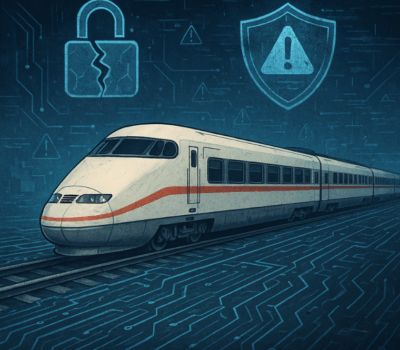Passenger counting: why it matters and how it’s done
Passenger counting might seem like a small part of running a railway, but it’s actually a big deal. Understanding how many people are using each train service helps operators make smarter decisions and keep everything running smoothly. Whether it’s for tracking revenue, managing timetables, or ensuring passenger comfort, accurate passenger data plays a huge role.
What is passenger counting and why is it important?
Passenger counting on trains involves tracking how many people are using the service at different times and stations. With this information, train operators can understand how busy certain routes are and adjust services by adding more trains or carriages to meet demand. This ensures there are enough seats during peak times and helps prevent overcrowding, making journeys more comfortable for everyone. It’s also crucial for safety, as knowing how full a train is can help prevent overloading and assist in emergency planning. Ultimately, it ensures public transport remains efficient, safe, and reliable.
Methods of counting passengers
There are several methods train operators can use to count passengers effectively.
- Manual counting involves hiring people to physically count passengers on selected services or at specific times. This method is often used a few times a year, particularly for reporting in the Department for Transport (DfT) Green Book, which tracks key data on rail usage and helps guide funding decisions. This approach can be costly due to the need for third-party companies to conduct the surveys and is limited in scope, covering only a small number of services. However, it can still provide valuable, detailed insights when needed.
- Gateline data is collected when passengers pass through the turnstiles or gates at a station. Since it can often be added to existing turnstile systems, it’s a low-cost option for tracking how many people are entering or leaving a station. While effective for measuring overall station usage, it can get tricky at larger stations with multiple platforms since it does not specify which service a passenger is using. For this reason, it’s more often used for tracking station footfall than individual train services, but its still useful data for resource planning and station management.
- Loadweigh. The loadweigh method measures the air pressure in a train’s suspension system. As passengers board, the weight increases, and this change in pressure is used to estimate the number of people on board. By assuming each person weighs an average of 75kg, operators can get a rough count of how many passengers there are. This method is most accurate when the train is stationary, as movement can disrupt readings. Many modern trains already have this system for other purposes, like controlling traction and braking, so it’s a cheap option. Plus it provides data on a coach by coach basis. On a good day, loadweigh systems can reach about 95% accuracy, though it’s generally less precise than other methods.
- Sensors may use ultrasonics or other technologies mounted above train doors to count passengers as they get on and off and can be quite accurate. However, they can struggle with obstacles like luggage or prams, and poor lighting or dirty lenses which can lead to errors. Some systems include sensors between carriages for more detailed data, but these are often left out to save costs. Overall, sensors provide a highly accurate and automated way of counting passengers, but they’re not without their challenges.
- Cameras enhance passenger counting further through 3D stereoscopic technology. They detect the movement of passenger’s heads and create a virtual line across doorways to count individuals as they pass. This advanced system can handle complex scenarios, like passengers getting off and then back on, and dealing with bags, prams and bicycles. These cameras can double as CCTV, providing added security benefits alongside passenger counting. With advanced video analytics, they can even be used to detect safety issues, making them a versatile option.
- CCTV counting uses existing cameras at stations or on trains. While CCVT standard cameras may not be smart enough to count passengers on their own, additional processing power can be added to do the job. Modern IP cameras can send multiple data streams, with one dedicated to security and another for passenger counting. This makes CCTV a practical and cost-effective solution, as it drives both security and counting functions from the same cameras.
- Wayside reporting is a flexible method that gathers passenger data either in real time or shortly after a station stop. For example, once the train starts moving, the system can send the latest passenger count, which may be used to drive upcoming station platform displays for example. This method can also provide summary reports at the end of a journey or day, offering insights into passenger movements at various points along the route. It can handle data from multiple trains and take into account tricky situations like splitting or joining carriages.
- Headcode changes are when a train switches service numbers, and they can make passenger counting a bit tricky. Ideally, the system would reset when all passengers get off at the final destination, but this rarely happens in practice. As a result, passengers getting off may be counted under the previous service number, while those boarding are counted under the new one. This overlap can lead to errors, especially during long dwell times, but improvements in systems are helping to mitigate these issues.
Each passenger counting method has its strengths and weaknesses, and a combination of these methods is often the best way to get reliable data. Whether it’s manual counts, gateline data, loadweigh systems, sensors, cameras, CCTV, or wayside reporting, accurate passenger counting is essential for planning, improving services, and ensuring the safety and comfort of passengers. In today’s fast-paced rail industry, getting the numbers right is crucial for a smooth and efficient operation.






